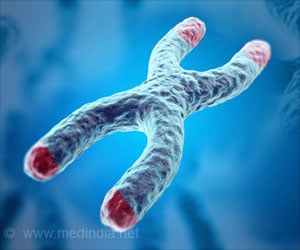Image-guided cardiac radioablation dramatically reduces episodes of fast, abnormal heartbeats for more than 2 years, stated study.

‘Image-guided cardiac radioablation dramatically reduces episodes of fast, abnormal heartbeats for more than 2 years.’





Heart disease is the leading cause of death in the United States. Over time, people with cardiovascular disease often have damage to the heart that leads to the development of arrhythmias, or abnormal heartbeats. The most lethal of these arrhythmias is ventricular tachycardia (VT). VT occurs suddenly, forcing the lower part of the heart to beat very rapidly. At fast speeds, the heart cannot effectively pump blood to the other organs in the body, which causes rapid death if not urgently treated with defibrillation, or shocking the heart back into a normal rhythm.Patients who have survived VT or who are at risk for VT usually have an implantable cardioverter defibrillator (ICD) placed. While shocks from an ICD can be life-saving, the shocks are painful and result in poor quality of life when they occur repeatedly over time. Patients with repeated VT often receive catheter ablation, in which a catheter is inserted into the heart to burn scars into the diseased area of the heart to render it electrically inactive. This process requires general anesthesia, takes up to nine hours and is a risky procedure, with a 5% chance of dying within 30 days of treatment and a 50% chance the procedure won't stop arrhythmias from recurring. If catheter ablation does not control the VT, patients are left with few options beyond a heart transplant.
In collaboration with Phillip Cuculich, MD, associate professor of cardiology and radiation oncology at the Washington University School of Medicine in St. Louis, Dr. Robinson and his team developed a noninvasive, outpatient procedure for treating VT called EP-guided noninvasive cardiac radioablation (ENCORE). This novel therapy fuses electrical (ECGs) and imaging (CT, MRI, PET) data to pinpoint the scar tissue in the patient's heart responsible for the arrhythmias, then targets it with a single dose of stereotactic body radiation therapy (SBRT), a type of high-dose radiation most commonly used to treat patients with cancer. ENCORE requires no general anesthesia and allows patients to go home immediately after treatment.
In this phase I/II prospective trial, Dr. Robinson and Dr. Cuculich treated 19 patients who had life-threatening cardiac arrhythmia with a single fraction (25 Gy) of SBRT. They previously reported that ENCORE led to a 94% reduction in VT episodes in the first six months. Longer-term follow up data now show that the effect persisted in 78% of patients for more than two years after the radiation treatment.
Overall survival was 74% after the first year and 52% after the second year. Nine patients died - six from cardiac deaths (heart failure and VT recurrence) and three from non-cardiac deaths (accident, amiodarone toxicity, pancreatic cancer). Late serious adverse events included two cases of pericardial effusion, or irritation of the lining of the heart, and one fistula between the stomach and the heart that required surgical repair; all three events occurred more than two years after treatment.
Advertisement
An additional benefit to treatment, said Dr. Robinson, was a reduction in the medications patients were taking, which resulted in fewer medication-related side effects and a higher quality of life. "These patients were on heavy doses of medications, with side effects such as liver damage, lung damage, nausea and thyroid problems. After they were treated, we could dramatically reduce their medications. We saw reduced VT, reduced medication and improved quality of life, at least in the intermediate term."
Advertisement
Source-Eurekalert










